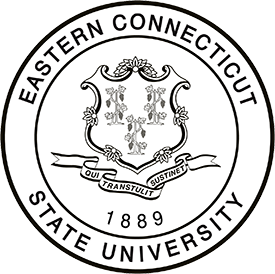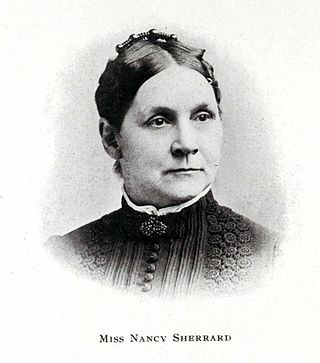
Salem is a town in New London County, Connecticut, United States. The town is part of the Southeastern Connecticut Planning Region. The population was 4,213 at the 2020 census.

Eastern Connecticut State University is a public university in Willimantic, Connecticut. Founded in 1889, it is the second-oldest campus in the Connecticut State University System and third-oldest public university in the state. Eastern is located on Windham Street in Willimantic, Connecticut, on 182 acres (0.74 km2) 30 minutes from Hartford, lying midway between New York City and Boston. Although the majority of courses are held on the main campus, select classes take place at Manchester Community College, Capital Community College, and a satellite center in Groton.
The Hartt School is the performing arts conservatory of the University of Hartford, a private university in West Hartford, Connecticut. Founded in 1920 by Julius Hartt and Moshe Paranov, Hartt has been part of the University of Hartford since its charter merged the then Hartt College of Music, the Hartford Art School, and Hillyer College to create the university in 1957. The Hartt School offers undergraduate and graduate degrees in music, dance, theatre, and associated disciplines. The Hartt Community Division offers a variety of opportunities in music and dance for students of all ages, backgrounds, and abilities.

The N. A. Rimsky-Korsakov Saint Petersburg State Conservatory is a school of music in Saint Petersburg, Russia. In 2004, the conservatory had around 275 faculty members and 1,400 students.

The Old Campus is the oldest area of the Yale University campus in New Haven, Connecticut. It is the principal residence of Yale College freshmen and also contains offices for the academic departments of Classics, English, History, Comparative Literature, and Philosophy. Fourteen buildings—including eight dormitories and two chapels—surround a 4-acre (1.6 ha) courtyard with a main entrance from the New Haven Green known as Phelps Gate.

The Litchfield Law School of Litchfield, Connecticut, was the first independent law school established in America for reading law. Founded and led by lawyer Tapping Reeve, the proprietary school was unaffiliated with any college or university. While Litchfield was independent, a long-term debate resulted in the 1966 recognition of William & Mary Law School as the first law school to have been affiliated with a university.

Bela Lyon Pratt was an American sculptor from Connecticut.
Awadagin Pratt is an American concert pianist born in Pittsburgh, Pennsylvania.

Betsy Mix Cowles was an early leader in the United States abolitionist movement. She was an active and influential Ohio-based reformer, and was a noted feminist and an educator. She counted among her friends and acquaintances people such as Frederick Douglass, William Lloyd Garrison, Henry C. Wright, and Abby Kelley Foster.

Berkeley Divinity School, founded in 1854, is a seminary of The Episcopal Church in New Haven, Connecticut. Along with Andover Newton Theological School and the Yale Institute of Sacred Music, Berkeley is one of the three "Partners on the Quad," which compose a part of the Yale Divinity School at Yale University. Thus, Berkeley operates as a denominational seminary within an ecumenical divinity school. Berkeley has historically represented a Broad church orientation among Anglican seminaries in the country, and was the fourth independent seminary to be founded, after General Theological Seminary (1817), Virginia Theological Seminary (1823), and Nashotah House (1842). Berkeley's institutional antecedents began at Trinity College, Hartford in 1849. The institution was formally chartered in Middletown, Connecticut in 1854, moved to New Haven in 1928, and amalgamated with Yale in 1971.

Hartford Female Seminary in Hartford, Connecticut was established in 1823, by Catharine Beecher, making it one of the first major educational institutions for women in the United States. By 1826 it had enrolled nearly 100 students. It implemented then-radical programs such as physical education courses for women. Beecher sought the aid of Mary Lyon in the development of the seminary. The Hartford Female Seminary closed towards the later half of the 19th century.
Dmitri Novgorodsky is a classical pianist. He is the first Moscow Tchaikovsky Conservatory graduate in piano performance and the first Russian-Soviet musician who has earned the Doctor of Musical Arts in Piano Performance degree from Yale University.

The Washington Female Seminary was a Presbyterian seminary for women operating from 1836 to 1948 in Washington, Pennsylvania. During the 19th century, it was "one of the best known and most noted institutions of its kind in the state".
The Mount Carroll Seminary was the name of Shimer College from 1853 to 1896. The Seminary was located in Mount Carroll, Illinois, in the United States. A pioneering institution in its time and place, the Mount Carroll Seminary served as a center of culture and education in 19th-century northwestern Illinois. Despite frequent prognostications of failure, it grew from 11 students in a single room to more than 100 students on a spacious campus with four principal buildings. Unusually for the time, the school was governed entirely by women, most notably the founder Frances Wood Shimer, who was the chief administrator throughout the Seminary's entire existence.

Eliza Jane McKissack was a music teacher who, in 1890, became the founding head of music at the University of North Texas College of Music, then called Normal Conservatory of Music, part of Texas Normal College and Teacher Training Institute, which was founded in 1890 as a private institution. The College of Music, today, is a comprehensive school with the largest enrollment of any institution accredited by the National Association of Schools of Music. It is the oldest in the world offering a degree in jazz studies. Since the 1940s, the College of Music has been among the largest in the country.
Edward Danforth Hale was a music school pedagogue in piano, music harmony, and composition and a collegiate music school dean. Hale was well known during his tenure at Colorado College as a proponent of standardized music education in public schools. He argued that curricular music in primary and secondary schools enhanced students' performance in classic core academics and made the classical core more comprehensive.
Minnie Island State Park is a public recreation area occupying a tiny island at the southern end of 529-acre (214 ha) Gardner Lake that is split by the townline between Salem and Montville, Connecticut. It is accessible only via boat and offers opportunities for picnicking and fishing as well as general exploration in a largely deserted setting. The 0.88-acre (0.36 ha) island is the state's smallest state park.

Charlotte Maconda was an American soprano singer.

The Salem Historic District encompasses the historic 19th-century town center of Salem, Connecticut. It extends along Connecticut Route 85 roughly from Round Hill Road to Music Vale Road, and includes the rural town's major civic and institutional buildings, as well as a number of surrounding residences. The area was developed after the town was incorporated in 1819, and was mostly built out by 1885. The district was listed on the National Register of Historic Places in 1980.













